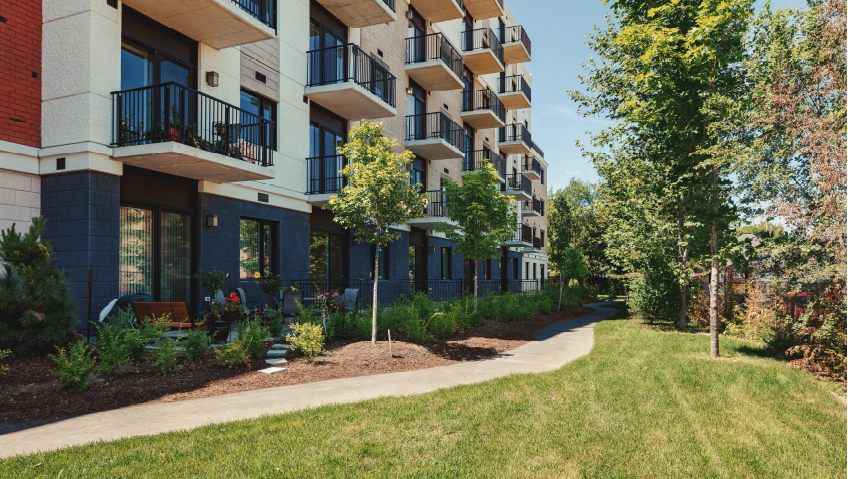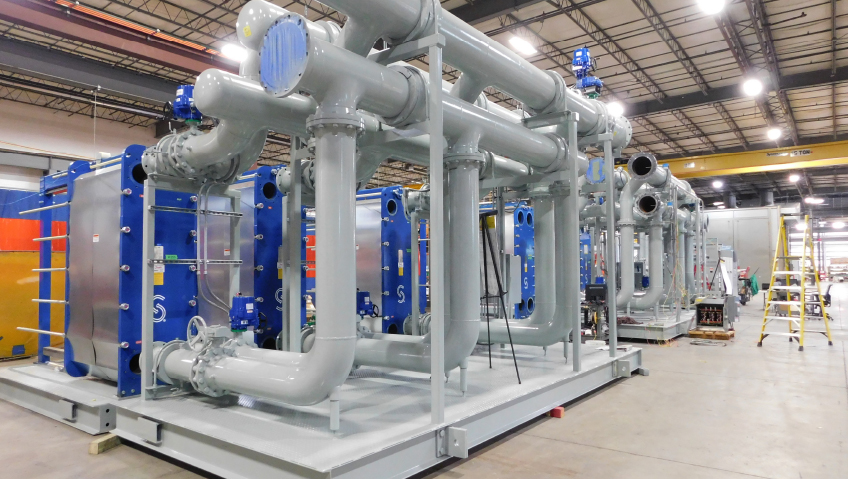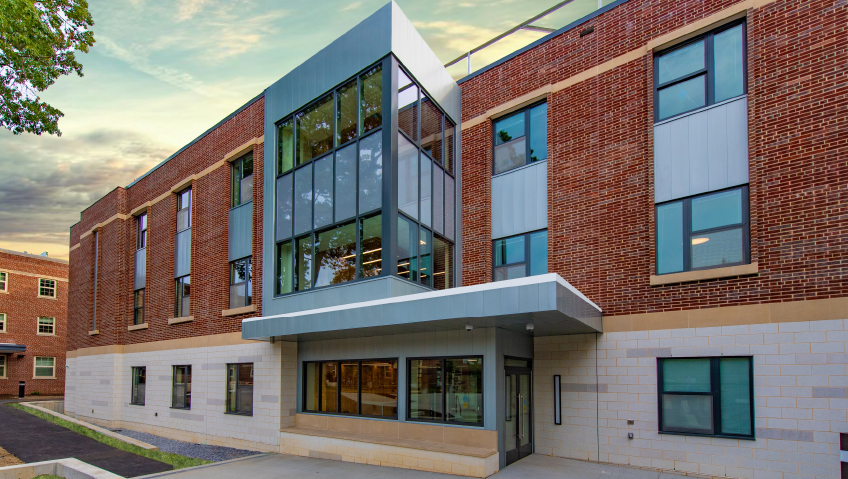Like all the best things in life, a Lépine apartment withstands the test of time. With its proud family name rooted firmly on Canadian soil since the birth of Montreal in the mid-seventeenth century, this family-owned developer owns and leases more than eleven hundred units stretching from downtown Ottawa to Renfrew that offer easy living and sophistication. Recently, it has turned its attention toward improving the modern lifestyle with a seemingly obvious, yet surprising, addition.
Meet the new home office. In the late twentieth century, many middle-class people grew up with studies or even studios at home. From here, professional folks worked on planning projects and handling heavy workloads that spilled over from the office into home life. Somewhere along the line, as space started coming at a premium, these dedicated workspaces slowly started disappearing from mainstream home design. Today, with the advent of a new form of remote working, a renewed need is on the rise, this time for fully-fledged home offices. Lépine Corporation is a premier eastern Ontario construction specialist that has identified this demand and is adapting its popular designs to answer it.
Known for resort-style residential apartments focused on families, Lépine Corporation is synonymous with top quality and intelligent floor plans, alongside finishes that routinely over-deliver on sustainability and performance. Having completed around ten million square feet of residential construction across thirty apartment complexes, the company continuously improves the sustainability and ecological footprint of its buildings. Every project the company signs off reflects the depth of personal pride in the field.
“When living spaces [reflect] and connect with surrounding beauty, we are inspired to live a healthy and active lifestyle. [This] fosters safe and respectful neighbourhoods. These communities provide the structure of socially strong and prosperous cities [and], in turn, the foundation of the best country to live in today,” says Francis Lépine, President and Founder.
Function is a big driver in the company’s designs, as Lépine illustrates. The spaces we cooked in “150 years ago didn’t look like much but, through time, builders have developed them into what we recognize today,” he says. “The bathroom didn’t develop overnight either. In the decades coming, it will become more acceptable to work from home. But [to do this] you need a proper environment to accomplish the task.”
To offer optimal function and a place to concentrate, Lépine’s home offices are enclosed and have everything needed to set oneself up fast. Otherwise, it would be like “providing bathrooms without putting fixtures in. [Home offices do not] take up much space. I know it’s not a new concept to create little spaces to work from home. It’s existed since the 1980s. But we need to start thinking about them [in a new way]. Because this trend is going to evolve,” Lépine says.
This refreshing approach to providing homes complete with fitted up office spaces means that people can arrive, set up their hardware, and get to work. He also tells me that, the need for the addition is increasing in rural areas as more remote workers settle in the countryside. “Sometimes the market can surprise us. People in the country may have even more to benefit from [home offices] than people in cities,” he says.
The company’s standards exceed minimum requirements; party walls contain two layers of acoustics’ cancelling material, bringing its sound transmission class (STC) rating to 64, well over the Ontario building code’s required STC of 50. In addition, its walls are designed to keep fire at bay for twice the required code standard.
When it comes to its growing sustainability initiatives, Lépine was recognized by Enbridge Gas, in association with Natural Gas Canada, for its incredible design standards that outperformed the Ontario building code by thirty percent.
The company’s most recent project, Howard Grant Terrace, is set in Barrhaven, a suburb of Ottawa South. This top-quality development comprises rental apartments offering Country Chic finishes and natural materials throughout plus a full complement of support staff, a yoga studio, state-of-the-art fitness center, and an elaborately equipped reception room, complete with a caterer’s kitchen and dance floor. There is also an enticing games lounge, furnished public terraces with barbecues, an indoor saltwater swimming pool, and much more.
This company has been a part of the environmental conversation since the 1970s. One side of this coin revolves around developing tighter building envelopes that mitigate the rising cost of cooling and heating forms of energy by limiting undesirable, expensive temperature fluctuations.
Being cost-effective remains an ever-present factor as well. “I want it to remain affordable for most Canadians with careers that [pay equal to union wages.] Lofty ideas have to make economic sense. It’s very challenging,” Lépine says.
As in most places around the world, the pandemic brought with it challenges that the company has managed to mitigate. By creating a strong backup of supplies early on in the crisis, it has so far successfully completed ongoing projects. This has forced the company to plan much further ahead and to incorporate longer time margins on project schedules to ensure continued customer satisfaction.
Currently, brittle supply chains are an increasing issue while a sharp decline in the availability of manpower is proving damaging not only to the local but also the national economy, according to Lépine. “We don’t have a large workforce. [At the same time], our government is increasing the pressure by augmenting immigration, thus putting pressure on the market [so there’s] even more demand.” Additionally, prioritizing public works projects further strains the limited labour force, he says, pointing out that the situation results in producing skyrocketing property prices.
“The media doesn’t address the reality on the ground. There is [also] not much support at all from either government or the unions to encourage young people to join the trades. We’re trying to hire young people but they’re few and far apart,” he adds. While immigration may be intended to fill the gap, many new Canadians have little interest in the field or struggle to communicate in the country’s two official languages, he says.
The president’s daughter, Pascale Lépine, Community and Land Development Coordinator, says that secondary schools need to put a higher emphasis on the value of working in trade positions. “I graduated school ten years ago. Schools don’t put much of a focus on the trades; it’s all about pushing university. For one project you need only one architect and one engineer. [The rest are mostly] tradespeople working with their [expert] hands and brains,” she says.
As it takes many years to hone trades skills to become a master at any craft, the pressure to motivate young people to take up these dwindling positions is real. Plus, as Pascale points out, taking up a trade means no student debt and the ability to start earning a salary immediately.
Considering the gravity of the situation, one can appreciate the sense of urgency to open the issue up for discussion by the public in general, as well as the government. “The general public doesn’t [understand] why prices are going through the roof.” Increasing material costs, over-regulation and taxation compounded with strict shortages of labour will produce the exact opposite of affordable housing no matter what CMHC does, Francis Lépine says.
He feels particularly strongly that the industry, government, and unions would do well to make a greater effort to guide disinterested school leavers, as there are many in need of work, toward apprenticeships in the trades. “It may take several years before it [reaps] tangible results. [Starting] today is better than tomorrow,” he says, fully aware that bringing about such big change is not possible to achieve short-term or alone.
“Our industry needs many more people on the job. Most trade companies would like to expand and regenerate their workforce, diversify, learn new skill sets, and apply new technology but they need the men and women to do [that],” he says.
If there was one thing Francis Lépine could wish for, it would be a growing, qualified workforce. The company wants to “keep on building and to be able to train a new generation,” he says. As Lépine says, achieving this will take more students than teachers.






